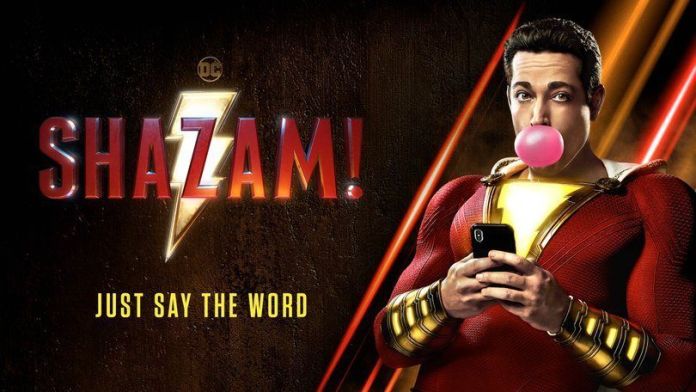Review: ‘Shazam!’ shocks audiences with hilarious comedy, relatable characters
“Shazam!” avoids the ultraviolent and depressing trend of other DC films. Instead, the film functions as a coming-of-age story with comedy on par with “Spider-man: Homecoming.”
April 11, 2019
In DC movies, Superman causes billions of dollars of property damage in literal earth-shaking fight scenes. Aquaman fights poorly animated fish people in epic ”Lord of the Rings”-esque underwater battles. And Batman breaks his only rule in crime fighting by killing criminals in the most brutal, inhumane ways. But with DC’s newest endeavour, “Shazam!”, the main character actually saves people and acts like a true superhero. Although his costume might look a little corny, Shazam is relatable, has a character arc (unlike Batman in all of his movies), and takes the genre back to its roots.
Instead of trying to be the most extravagant, epic blockbuster of all-time (like “Aquaman”), “Shazam!” has a smaller, more-condensed plot taking place in one city. And with the more compact setting, the budget for the film is one-third of what was spent on “Justice League” and looks far-more professionally shot.
“Shazam!” takes place in Philadelphia instead of a made-up comic book city like Metropolis or Gotham City, and revolves around a 14-year-old boy named Billy Batson (Asher Angel). Billy is an orphan graciously welcomed into a foster home with five other foster kids. Feeling a bit out of his comfort zone, Billy manages to gain the attention of the The Wizard Shazam (Djimon Hounsou) who grants him the powers of six immortal elders (The wisdom of Solomon, the strength of Hercules, the stamina of Atlas, the power of Zeus, the courage of Achilles, and the speed of Mercury). By saying “Shazam,” Billy transforms into an adult superhero played by Zachary Levi who possesses similar powers to Superman.
The origin story portion is probably the least engaging part of the film. For “Shazam!,” the greatest strengths come from the realistic dialogue and motivations the three main characters have. Billy just wants to be accepted by a loving family ever since he lost his mom. Throughout the film, he learns how to be vulnerable and open up his heart up to others including his foster brother, Freddy Freeman (Jack Dylan Grazer).
Freddy is obsessed with superheroes in a world where actual superheroes like the Justice League exist. By following Superman’s example, Freddy is motivated to help people despite his disability. Freddy is basically Billy’s moral compass throughout the film. As Billy begins to abuse his powers to make money and become famous, Freddy keeps pressuring him to use his powers responsibly as he should.
It is not until the villain of the film, Thaddeus Sivana (Mark Strong), begins to cause mayhem that Billy becomes Shazam again to save the day. Sivana is also a pretty compelling character as far as villains in superhero films go. He was constantly told a young age that he will never be special enough in any significant way whatsoever to accomplish anything or by his father and brother. All he wants is to be extraordinary and worthy of attention. That, and kill his family, a 14-year-old, and become the most powerful being on earth. But Sivanaut still has some relatability to him, and his upbringing informs the character immensely.
Scenes with Freddy and Billy learning how to use the powers of Shazam are some of the funniest scenes in a superhero movie. “Shazam!” joins the same league as “Deadpool” or “Spider-Man: Homecoming” because of its humor. Not only does the film poke fun at the concept of a 14-year-old boy turning into a full grown man by referencing “Big,” but it also mocks the superhero genre in a very tongue-in-cheek manner. A key moment makes fun of the entire concept of a villain monologue, and the things Billy does with his powers are very relatable and cartoonish at the same time.
“Shazam!” not only manages to tell a familiar story with relatable and comedic characters, but it also tells an origin story the right way with adaptable pacing. Not only is the audience given room to breathe in some parts, but it also knows how to pick up the pace just enough for people to stay interested. It is definitely the Anti-Man of Steel” because of the lack of excessive property damage, and avoids the tired tropes of the “child in an adult’s body” cliche. Although it might sound gimmicky, the film manages to mix satire and whimsy in a unique way.
Rating: A-





